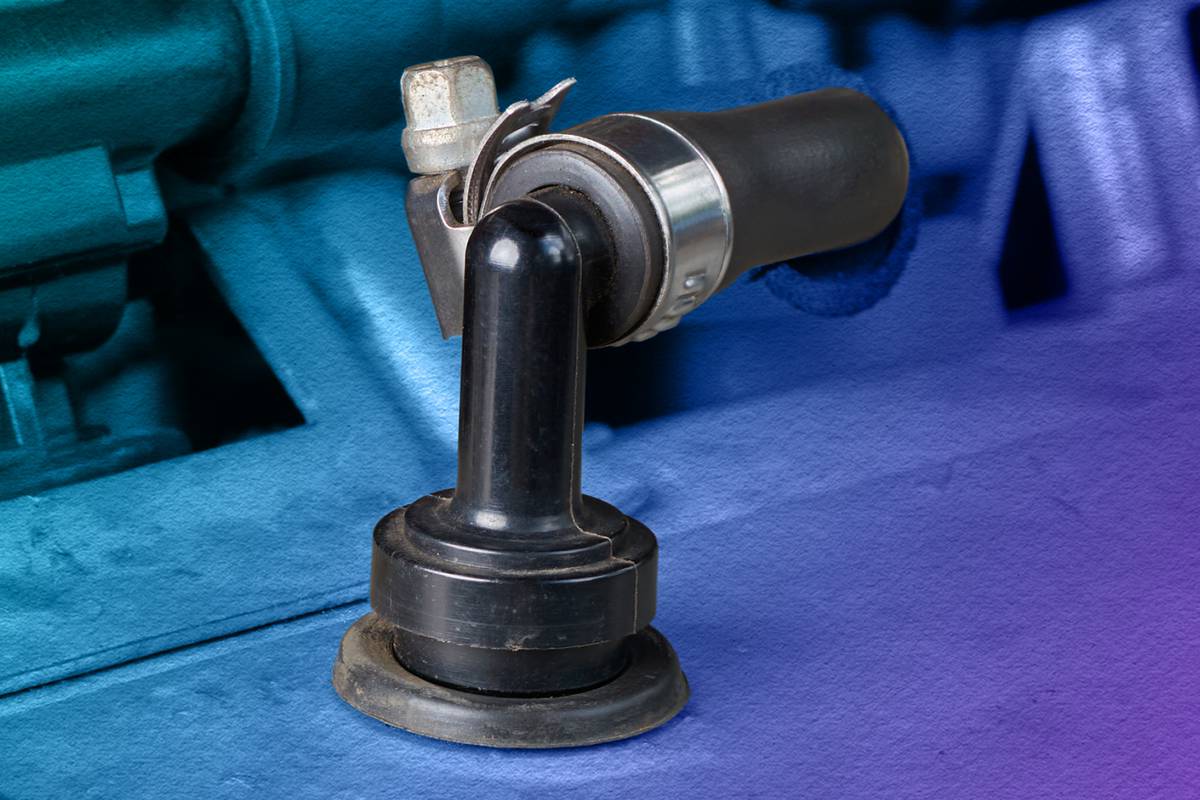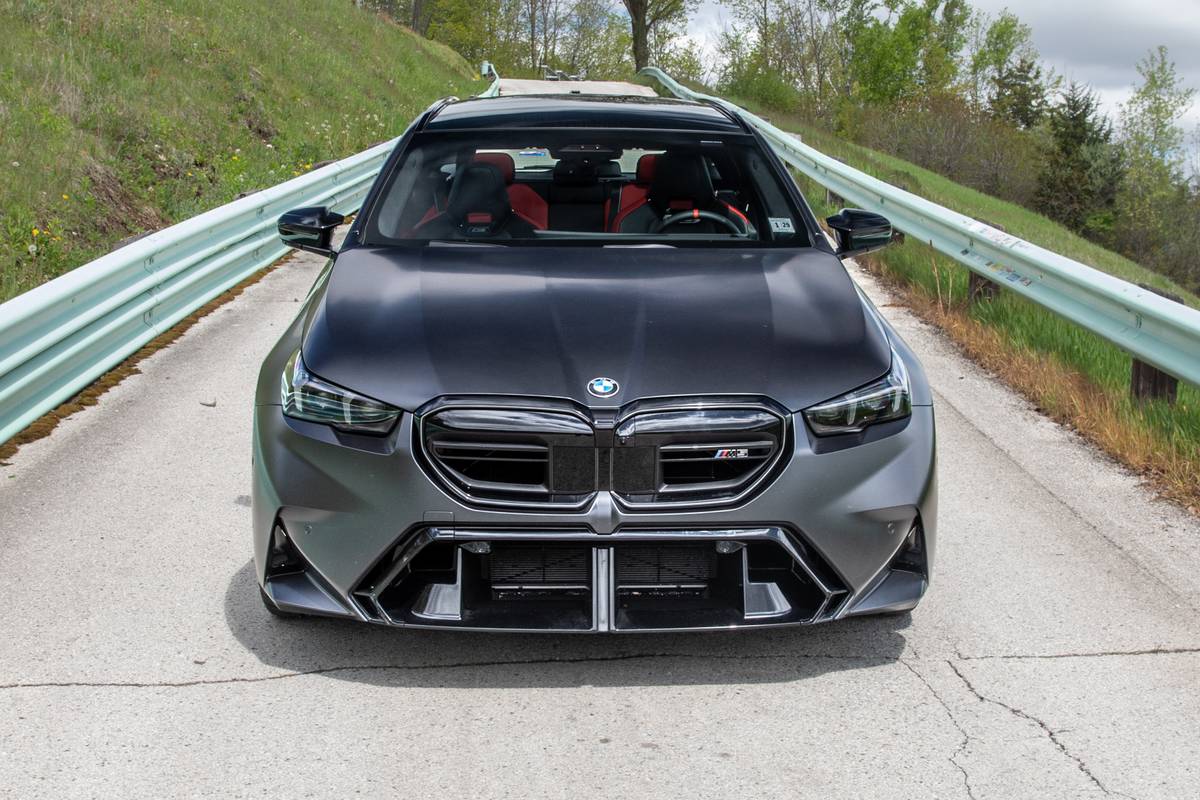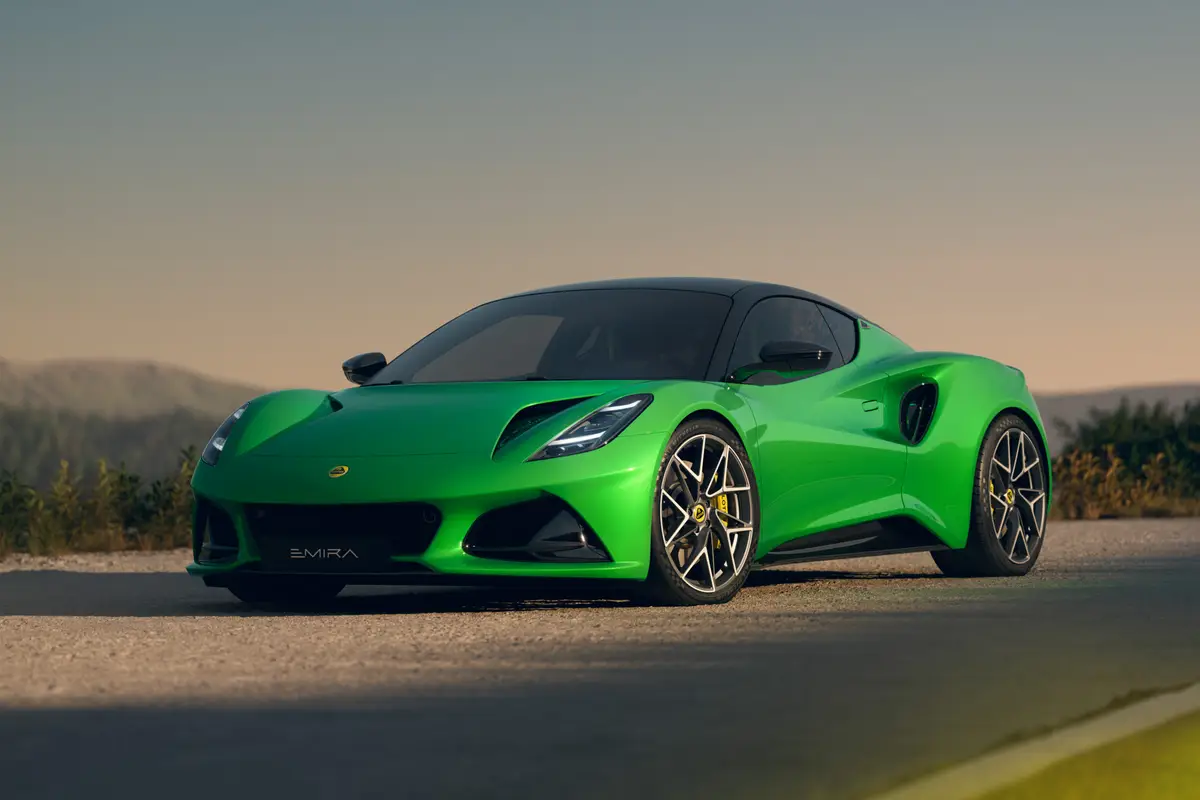chicagotribune.com's view
When the vehicle arrived for testing, the wife grabbed the three granddaughters by the arms and the dog by the tail and fled inside the house.
“But it doesn’t have Firestone tires on it,” we hollered as she ushered the crew into a basement corner.
Can’t blame her. The vehicle was a 2001 Volvo.
Since we have a rule that Mom and Dad must dress to fit the image of the vehicle being tested, the Volvo meant the bottle blonde would have to slip on orthopedic shoes and hair net while hubby grabbed the sweater with the patches on the elbows.
Hmm, she didn’t rebel over getting tattooed when the Mustang Cobra arrived?
But we digress. The Volvo was the 2001 V70 XC, the V standing for station wagon in Swedish. So if you spot a Swedish athlete flashing the “V” sign with his or her fingers at the Olympics next month, it doesn’t mean victory. It means “Send a station wagon, I’m pooped.”
XC stands for cross country, which is where you can go in a V70 wagon, which features full-time all-wheel-drive for go anywhere, any time travel.
For years Volvo has churned out some of the most godforsakenly dull-looking and moribund-acting vehicles, rationalizing their existence by calling them safe.
Then Ford bought the company, and the limp now show signs of life. Despite Ford’s largess, however, the car in the driveway still was a station wagon.
For 2001 the V70 has been redesigned for the first time since in bowed for 1997, but it still looks like a long box on wheels hanging from a roof rack. Black bumpers, fender flares and rocker panels attempt to make it look a little more like an SUV than a wagon, but Subaru did a better job making its wagons look like sport-utility vehicles.
Yet Volvo says it can’t make the darn things fast enough and almost half the buyers shopped an SUV but turned to a “real” car with the same AWD as the SUV.
What makes the AWD XC noteworthy is that it sets the stage for Volvo to add an SUV to win back European loyalists who fled to a Mercedes M-Class SUV or Japanese loyalists who opted for a Lexus RX300.
Volvo insiders said getting folks to recognize XC as an AWD designation will help it attract them to the SUV, which will be called the Family Activity Vehicle, or FAV, and carry the XC designation wh en it arrives in a couple of years.
Though a wagon, the XC does have redeeming qualities, the primary one being an AWD machine without the truck-like ride and handling in traditional AWD SUVs built off truck platforms.
You experience ride and handling that’s car-like but more sure-footed than in a car without AWD.
The XC is powered by a 2.4-liter, 197-horsepower, turbocharged 5-cylinder engine rated at 17 m.p.g. city/22 m.p.g. highway.
Volvo argues that the shift patterns used in government fuel-economy testing don’t match those on its new 5-speed automatic. With “real world” shifting, Volvo insists you should expect 20 m.p.g. city/26 m.p.g. highway.
The engine is smooth and quiet, considering the odd number of cylinders, and lag time between pressing the pedal and turbo response is minimal–not that you’d press the pedal very hard or very often in a wagon.
But what makes the XC intriguing is the novelty items inside:
– Rat her than hang your coat from a hook above a side window, which blocks side vision, there’s a hook in the passenger-seat headrest to keep coat from wrinkling and vision from being blocked.
– Cupholders are everywhere – instrument panel, center console, even in the rear cargo hold.
– It took Volvo to realize lots of holders go empty if you don’t have the dough to buy the cups to go in them, so it put a credit-card holder in the glove box and a pen holder in the dash.
– A net fastens from the roof to the tops of the rear seat backs to convert the rear cargo hold into a mini pet pound.
– No pets, but kids? There’s an optional ($1,150, which includes the pet pound net) third seat (rear facing) like Honda offers in its Odyssey mini-van, that flips out of the rear cargo floor when needed.
– Have children (40 to 80 pounds) ready for booster seats, but don’t like having to strap a booster to the rear seat? Volvo engineers came up with optional ($300 for two) integrated children’s booster seats. Lift a handle below either rear seat and the bottom cushion rises so you can fasten the child securely with the safety belts that come with the car without an add-on booster.
– Kids can make a wagon a rolling recycling bin, a thought that prompted Volvo to offer a standard plastic ring that pops out from the back of the center console to fasten a plastic garbage bag for trash.
– Why a trash bag? Because you can get an optional cooler ($149, a zippered pouch) for pop and/or sandwiches in place of the folddown center armrest in back. Word is that Volvo eventually may add a mini-fridge, easy to do because there’s a power plug in the cargo hold behind the armrest.
– With all the kids, pop and sandwiches, it’s only natural that you can get an optional table for $45 that flips and folds out of that rear-seat armrest.
– And leave it to Volvo to offer a first-aid kit ($30 option!). And it’s not just a run-of-the-mill bag filled with gauze, but a large pouch hidden behind a door in the rear cargo hold. The kit comes with detailed instructions/pictures to treat bleeding and shock and administer mouth-to-mouth resuscitation–in seven languages, though wading through six to get to English requires skimming over “fingertryck” and “compression digital” before learning to “apply pressure to finger” to stop bleeding.
Two suggestions: Instructions in one language based on customer choice, and more important, don’t hide a first-aid kit behind a door in the cargo hold that requires stopping the vehicle, lifting the rear hatch, opening the hidden door and then translating “compression digital” before preventing a passenger from bleeding to death.
And, why a first-aid kit without bandages, but with rubber gloves and a plastic mask to insert over the victim’s mouth so you don’t get his or her slobber on you. If the situ ation comes down to mouth to mouth, are you going to bother with rubber gloves and a plastic mask for any family member riding in the wagon? And if a total stranger is in your wagon, chances are you’ll yell “fingertryck” and simply drive to the nearest emergency room.
Also of note are manually operated side window shades; cargo mat with carpet on one side, rubber on the other for carting wet items; front passenger grab handle along the center console, which the owner’s manual says is “for support when driving over gravel roads”; and a cargo hold shade to hide items.
There’s also dual front- and side-impact air bags for the front-seat occupants, inflatable side curtains that pop out of the roof and down along the windows to protect occupants in a side impact and traction control and anti-lock brakes all standard.
One feature you might want your lawyer to check out first is the optional ($2,500) navigation system with a screen that motors up from the top o f the dash each time the ignition is turned on.
Before any map appears, a message shows on the screen warning: “You are responsible for safety at all times. Press enter to confirm your agreement.”
By pressing enter to agree that you are responsible for your safety, is Volvo absolving itself and holding what could be the drinking or drugged or speeding or reckless motorist liable for his or her actions? How un-American, even for a Swedish automaker!
And be warned, the XC we tested with optional ($1,000) power sunroof has lousy cabin harmonics. With sunroof open or closed, there’s a metallic humming from above. Volvo says you can stop the noise by keeping the roof within 1 1/2 inches of being fully open. Stops the noise, but not rain or snow.
The 2001 Volvo V70 XC starts at $34,900, but can top $40,000 with its long list of high-priced options, which could send potential buyers looking at a Mercedes M-Class or Lexus RX300.
Latest news



